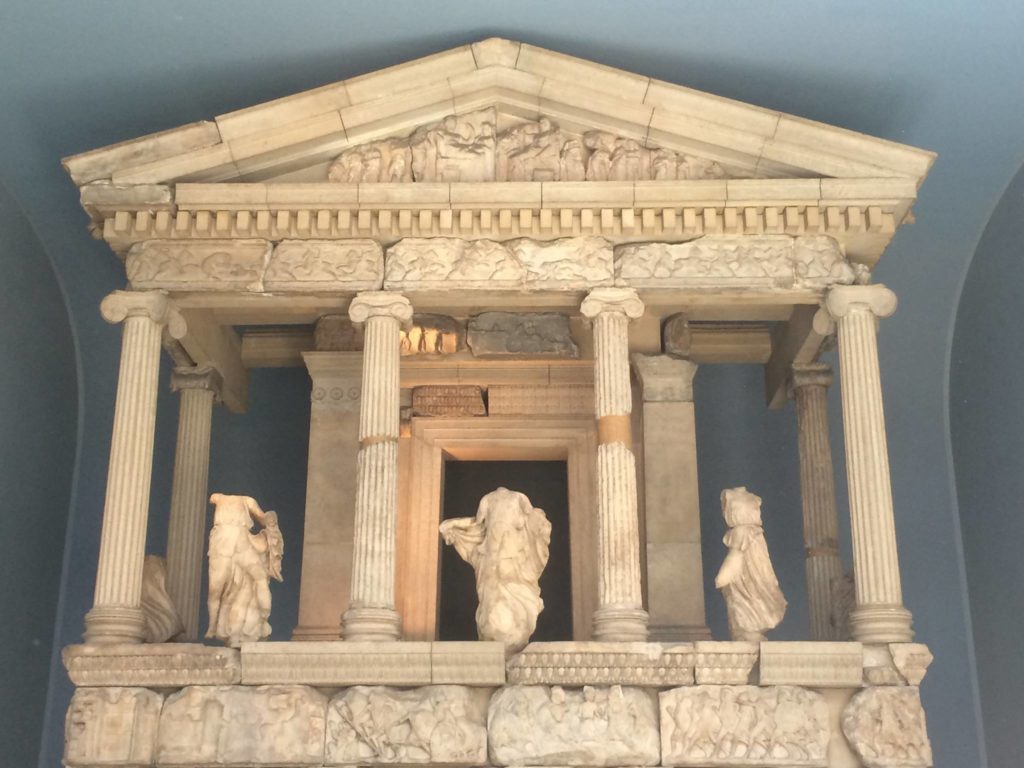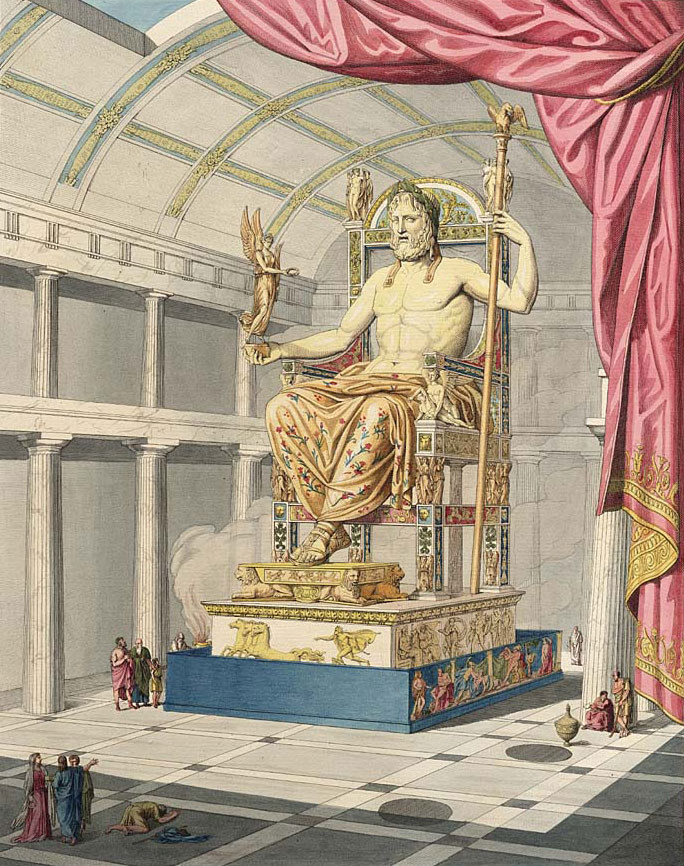
Read The Solitaries: Inside Monastic Culture Part 1
Roman Religious Colleges
The Vestal Virgins of ancient Rome, formed in the seventh century BCE, were the world’s first known cenobitic proto-monastics and their Atrium Vestiae, or House of the Vestal Virgins, was the first proto-monastic house. The Vestal Virgins, a part of the College of Pontiffs, must be understood in context of the whole organization of the official state religion.
A collegium (“joined together,” English ‘college’) was a legally formed association in the Roman Republic and the Roman Empire that was organized like a religious society, guild, social club, or burial association. The Roman Senate was the ultimate model for the collegia. Collegia the state deemed unfit at various times were outlawed, such as the Collegium Bacchus and the Christian Church.
Some examples of Roman colleges* are: College of Gladiators, College of Actors, College of Woodworkers at Ostia, College of Brothel Keepers, College of Bakers, College of Shoe Makers, College of Metal Vessel Makers, College of Wine Dealers, and College of Planters.
*According to Guesde, Jules (1898). Bliss, William Dwight Porter (ed.). The encyclopedia of social reform: including political economy, political science, sociology and statistics. New York: Funk & Wagnalls Company. P. 675.
List of Ancient Roman Collegia
There were four major religious colleges, the auguria (English ‘augurs’), the quindecimviri sacris faciundis (“fifteen officiates of the sacred rites”), and the epulones, organizers of religious feasts for festivals and games. The primary religious college was the Collegium Pontificum, or College of Pontiffs, formed of the highest priests of the state religion.
These were mainly selected solely from the ranks of the rich and powerful, the Patricians, to maintain the supremacy of the state religion, and until the death of Julius Caesar (100 – 44 BCE), to act as political advisors.

From the Via Labicana, circa 20 BCE, on display in the Capitoline Museum, Rome.
High Priests
At sacrificial feasts the sacerdotes, or priests of the official Roman religion sat around the table according to the priestly hierarchy of the ordo sacerdotum, the order of priests that included the members of the College of Pontiffs, except the Vestal Virgins.
Sitting closest to the gods was the Rex Sacrorum, after him the Flamen Dialis, Flamen Martialis and Flamen Quirinalis. At the opposite end was the Pontifex Maximus, the head of priests in the human world.
During the Roman Republic the pontifices, or pontiffs, replaced the kings as high priest. The head of the College of Pontiffs was the Pontifex Maximus, whose office was the Regia, former residence or headquarters of the kings of Rome. The Sacra Via or “Sacred Road” was the main street of Rome, which led from the apex of Capitoline Hill, through the Forum, to the Colosseum.
The Regia was built alongside the Sacra Via near the Roman Forum, the center of a triangle formed by the Temple of Vesta, the Temple of Caesar and the Temple of Antoninus and Faustina. After Augustus Caesar took the position of Pontifex Maximus in 12 BCE, the post belonged to the reigning emperor.
The fifteen flamens each managed one of fifteen gods along with their own cults. The flamens were divided into three orders. The flamines maiores (“major priests”) served the early (Archaic Triad) Capitoline Triad. The Flamen Dialus served Jupiter, the father and king of the gods, god of the sky.
The Flamen Martialis served Mars, the god of war. The Flamen Quirinalis served Quirinus (the deified Romulus, founder of Rome with his brother Remus). The flamines minores (“lesser priests”) served the twelve minor gods (Ceres, Vulcan, and others not generally recognized), and could be Plebeians.
The Rex Sacrorum, or “king of the sacred rites,” was largely a figurehead; he could not serve in the military or pursue a career in politics. He performed regular monthly sacrifices to the gods and two annual sacrifices in the Comitium, the outdoor public forum where public government assemblies were held.
His wife was the Regina Sacrorum, “queen of the sacred rites,” a high priestess that made monthly public sacrifices to the goddess Juno.
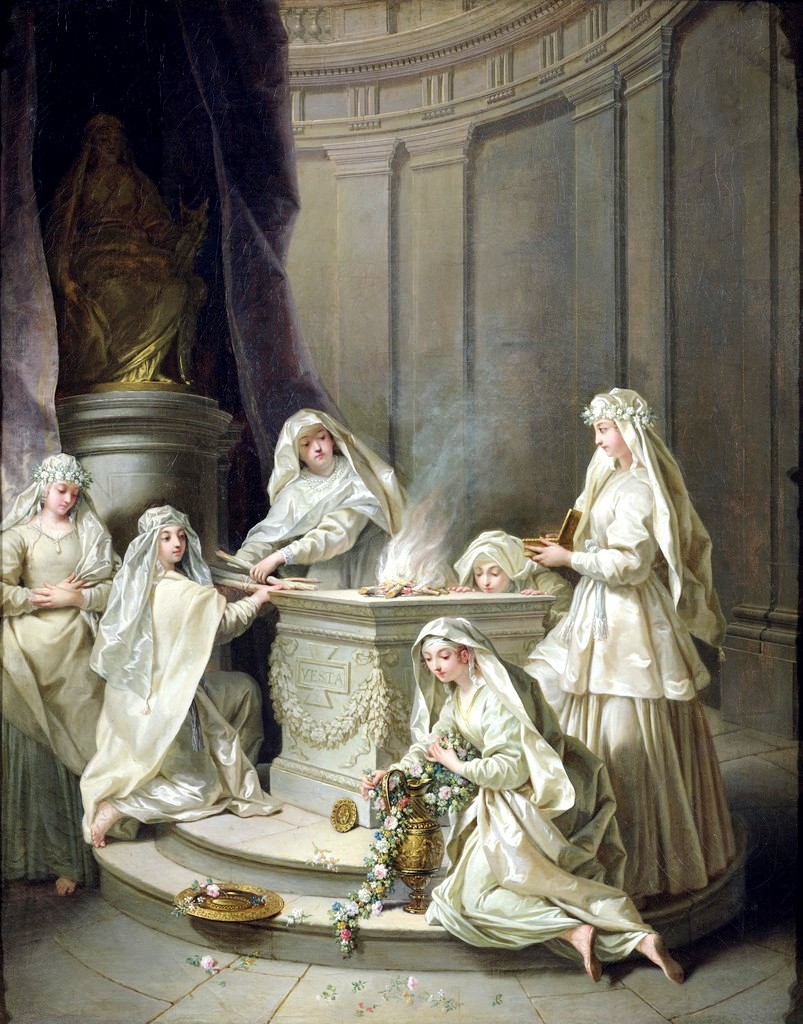
The Vestal Virgins
According to the first century Roman historians Livy and Plutarch, King Numa Pompilius, who reigned 717–673 BCE, was the founder of the Vestal Virgins. This would make the Vestals the very first nuns. They worshipped Vesta, goddess of the Hearth, performed their own sacred rites and public ceremonies, and kept the sacred fire at the Temple of Vesta that protected the city as long as it never went out.
Other duties included keeping state documents and wills of public figures. Their vestments were white robes designed to conjure an image of the Roman bride and matron.
Vestals were chosen by lot from candidates of sound mind, body and reputation. There were only six Vestals at any one time and new members were admitted to the order from ages six to ten. They took a vow of chastity for thirty years duration, after which they were often married off and given a pension.
The head of the Vestals was the Virgo Vestalis Maxima or Vestalium Maxima, “greatest of the Vestals,” who participated in the College of Pontiffs.
The Atrium Vestiae, or House of the Vestal Virgins, is the earliest known nunnery. The building was a beautiful three-story palace at the foot of the Palatine Hill, next to the Regia and the Temple of Vesta in the Roman Forum, surrounded by a sacred grove. The palace contained fifty rooms encompassing an atrium or cloister with a double pool and statues of King Numa and Vestal Virgins.
The Vestal Virgins were dismantled in 394 CE, when Emperor Theodosius I decreed Christianity the official religion of the empire, and banned ancient native traditions. The House of the Vestals became a residential building.
House of the Vestals Photos – Plan a Visit
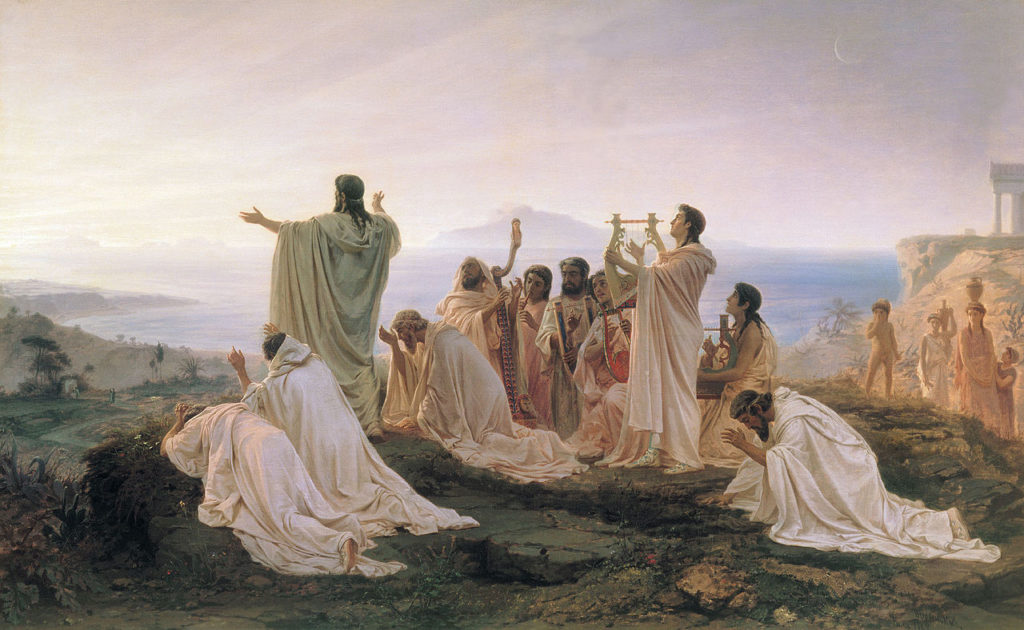
Greek Philosophers
The ancient Greek Pythagoras was the first to be known as “philosopher,” or “lover of wisdom.” Both men and women were Pythagoreans, including his own mother, wife and daughter. The early Pythagorean communities from the sixth century BCE were not properly monastic or even religious institutions, but rather, philosophical schools.
As Pythagoras taught both mysticism and mathematics, two separate schools arose from this philosopher, the akousmatikoi, “Listeners,” who were more secretive, mystical and ceremonial, and the mathēmatikoi, “Teachers,” who were more scientifically oriented.
Both schools had dissolved before the fifth century BCE; the akousmatikoi were superseded by the Cynics and the mathēmatikoi were absorbed into the Platonic Academy. The Cynics, founded by Antisthenes (c. 445 – 365), a student of Socrates, and embodied by Diogenes of Sinope (412 or 404 – 323 BCE), carried on the tradition of the mendicant (begging) philosophers.
The Cynics held that virtue was harmony with nature, living in poverty with only the bare necessities and rejecting the material succors and desires around health, wealth, power and fame. Cynics were anarchists who denied the benevolence of democracy and social equality, looking down on the masses, but advocated charity and hoped to build a perfect society.
The philosophical school of cynicism went into decline as a part of its core principles was adopted into Stoicism, a political philosophy structured for a city, rather than a system like a Rule for a mendicant order. Cynicism saw a revival in first century Imperial Rome, and finally came to an end in the fifth century CE, although its asceticism and preaching methods influenced Christianity.
As we shall see, Jesus of Nazareth, or Jesus Christ, and his faithful developed an influential and long-lived family of monastic communities.
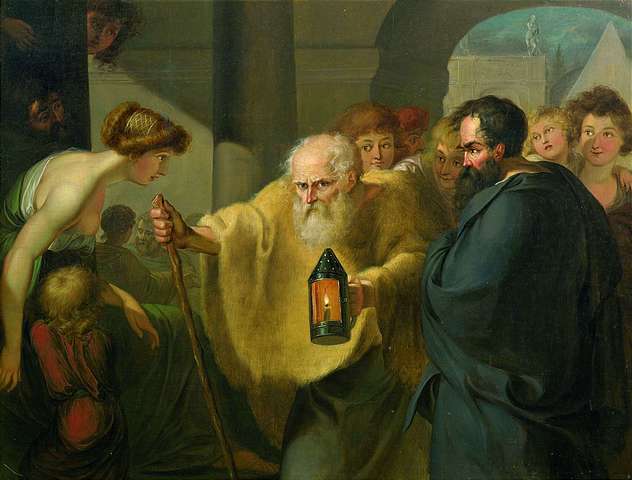
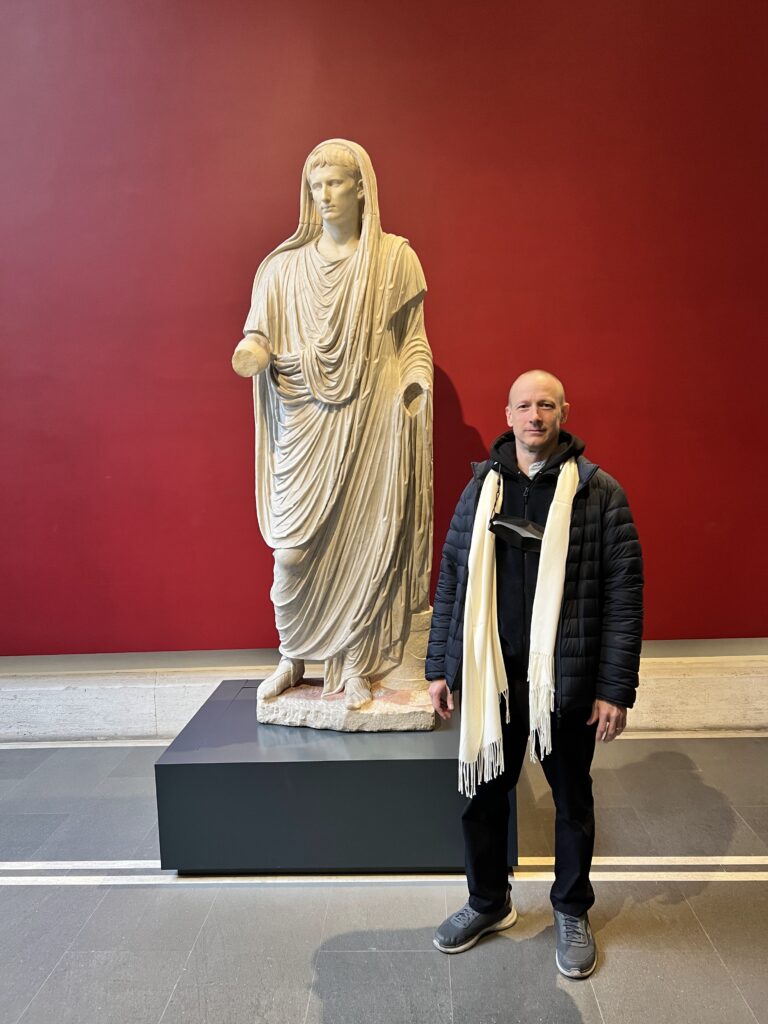
Author with statue of Augustus Caesar, Capitoline Museum, Rome, 2022.



